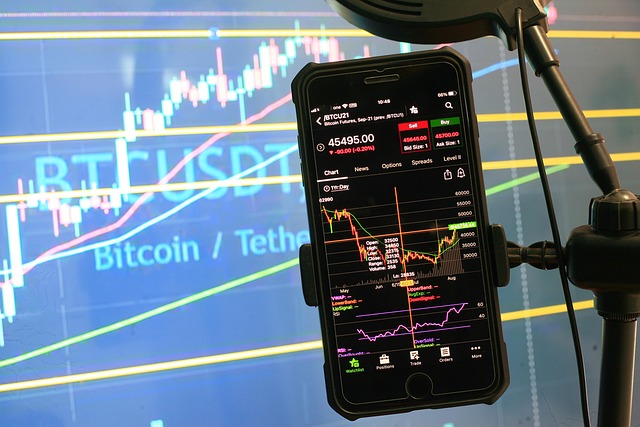Easy Crypto Trading Strategies for Beginners
Author: Jameson Richman Expert
Published On: 2025-10-26
Prepared by Jameson Richman and our team of experts with over a decade of experience in cryptocurrency and digital asset analysis. Learn more about us.
Learning a handful of easy crypto trading strategies can dramatically improve your results while reducing stress and risk. This article summarizes simple, proven approaches you can use on small timeframes or longer holds, explains core principles (risk management, position sizing, psychology), shows step-by-step examples, and links to trusted tools and resources so you can start trading responsibly today.

Why start with easy crypto trading strategies?
Cryptocurrency markets are volatile, fast-moving, and sometimes opaque. Beginners who try to capture every move or chase complex systems typically lose money. Starting with straightforward, repeatable strategies helps you:
- Limit emotional decision-making
- Measure what works via backtesting and paper trading
- Learn core trading skills (charts, indicators, risk control)
- Scale complexity later—once you’ve mastered fundamentals
These accessible strategies emphasize risk control and simplicity. You’ll find examples that work on popular crypto pairs like BTC/USDT and ETH/USDT, and guidance on tools, exchanges, and verification so you trade safely and smartly.
SEO and practical focus: what this guide covers
- Simple pattern- and indicator-based strategies (trend, breakout, mean-reversion)
- Cost-averaging and portfolio building
- Automation basics: bots and signals (how to verify and choose)
- Risk management, position sizing, and psychology
- How to test and deploy strategies on real exchanges
Core principles every trader must follow
Before diving into strategies, internalize these rules:
- Risk only what you can afford to lose: limit per-trade risk (commonly 0.5–2% of account equity).
- Use stop-loss orders: define exits before entering trades to avoid emotional exits.
- Keep position sizes consistent: use position sizing math (see below).
- Record and review trades: keep a trading journal and measure win rate and risk-reward.
- Stay updated on fundamentals: news and on-chain events can invalidate technical setups quickly.

Strategy 1 — Trend following with moving averages
Trend following is one of the most reliable and easy crypto trading strategies. It captures sustained moves using moving averages (MA) or exponential moving averages (EMA).
How it works
- Identify the market trend with two EMAs — a short EMA (e.g., 20) and a long EMA (e.g., 50 or 100).
- Enter long when the short EMA crosses above the long EMA and price confirms above both.
- Exit when the short EMA crosses back below the long EMA or when a defined stop-loss hits.
Example — BTC/USDT on 4H chart
Assume:
- 20 EMA (short) and 50 EMA (long)
- Stop-loss: below the recent swing low
- Take-profit: trail with 20 EMA or use a fixed 2:1 reward-to-risk
If account size is $5,000 and risk per trade is 1% = $50, and stop-loss distance is $500, position size = $50 / $500 = 0.1 BTC equivalent. Adjust sizes for coin decimals and fees.
Strategy 2 — Mean-reversion with RSI
Mean-reversion strategies bet that price will revert to its mean after extreme moves. The Relative Strength Index (RSI) is popular for this.
How it works
- Use RSI (14). Consider oversold below 30 and overbought above 70.
- Enter long when price meets support and RSI < 30 with bullish confirmation (e.g., bullish candle or divergence).
- Place tight stop-loss below support and target a conservative profit (e.g., 1.5–2x risk).
Example
On an altcoin chart, price falls sharply and RSI reads 25. Wait for a bullish confirmation candle or a positive RSI divergence. Risk $30 to target $60. Use smaller position sizes in highly volatile altcoins.
Strategy 3 — Breakout trading (volume-confirmed)
Breakout trading captures price moves when a coin breaks a key level (resistance) with increased volume. This is effective in crypto where momentum drives bigger moves.
How it works
- Identify consolidation (range) and mark resistance and support.
- Enter when price closes above resistance on higher-than-average volume.
- Use stop-loss below the breakout candle or the overhead range low.
- Scale out partial positions as the move progresses.
Pro tip
False breakouts are common. Use a confirmation such as retest of broken resistance turned support or confirm with an indicator like OBV (On-Balance Volume).

Strategy 4 — Dollar-cost averaging (DCA) and HODL
DCA is one of the easiest crypto trading strategies for long-term investors. Instead of timing the market, you consistently buy a fixed dollar amount at regular intervals.
Why DCA works
- Reduces timing risk and emotional buying at tops
- Lower average entry price in volatile markets
- Simple to automate via recurring buys on exchanges
Example
Invest $200 weekly into BTC regardless of price. After 52 weeks you have spread risk across highs and lows. For active traders, combine DCA for core holdings and a small allocation for active trading.
Strategy 5 — Grid trading for sideways markets
Grid trading is rule-based automation that places buy and sell orders at predefined intervals above and below a base price. It's ideal for ranging markets.
How it works
- Define upper and lower price bounds for the grid.
- Set grid levels (e.g., every 1–3% depending on volatility).
- Place alternating buy and sell limit orders—profit accumulates as price oscillates.
When to avoid
A trending market that moves strongly in one direction can deplete the grid’s funds. Use in confirmed sideways ranges or combine with stop conditions.
Strategy 6 — Range trading and support/resistance scalps
Range trading involves buying near clear support and selling near resistance while the price oscillates. This is simple but requires discipline.
Rules
- Trade only when range is validated (at least 3 touches of support/resistance).
- Use tight stop-losses just outside the range.
- Avoid trading during major news or breaks of range boundaries.

Indicators to learn (and why)
Indicators are tools—know their strengths and limitations.
- Moving Averages (EMA/SMA): trend identification and dynamic support/resistance.
- RSI: momentum and overbought/oversold signals.
- Bollinger Bands: volatility and expansion/compression setups.
- MACD: trend changes and momentum confirmation.
- Volume and OBV: confirm breakouts and divergence.
For educational context on technical analysis, see the Wikipedia article on technical analysis. For a thorough primer on Bitcoin, read the Bitcoin Wikipedia page.
Risk management and position sizing (practical formula)
Position sizing keeps you in the game. Here’s a straightforward formula:
- Decide account risk per trade (e.g., 1% of account equity).
- Calculate the dollar risk = account balance × risk percentage.
- Find stop-loss distance in dollars per unit (entry price – stop-loss price).
- Position size (units) = dollar risk / stop-loss distance.
Example: Account = $10,000, risk = 1% = $100. Entry = $40, stop-loss = $36. Stop distance = $4. Position size = $100 / $4 = 25 units.
Psychology, discipline, and trade journaling
Even simple strategies fail without discipline. Keep these habits:
- Use a trade plan before entering (entry, stop, target, rationale).
- Record every trade: instrument, timeframe, entry, exit, size, result, notes.
- Review weekly and monthly to learn what works; cut losing strategies quickly.

Backtesting and demo trading
Before live capital, backtest rules on historical data and paper trade. Many platforms (TradingView, exchange testnets) let you simulate trades. Backtesting validates expectancy: average win size × win rate minus average loss size × loss rate.
For advanced chart ideas focused on BTC/USDT pairs and example setups you can test, check this comprehensive guide to BTC/USDT TradingView ideas: Comprehensive Advanced Guide to BTC/USDT TradingView Ideas.
Automation, bots, and signals (how to choose and verify)
Automation reduces emotional mistakes but introduces operational risk. When using trading bots or signal services, verify authenticity and track records carefully.
- Prefer transparent providers who publish historical performance and methodology.
- Use API key restrictions (disable withdrawals) when connecting bots to exchanges.
- Start with small capital while testing bots live.
If you’re evaluating signal apps, read expert reviews and compare features. A curated review for signal apps and how they perform in 2025 is available here: Best Crypto Signals App for 2025 — In-depth Review.
Verifying authenticity of trading apps
Scams exist—verify apps and services by checking domains, customer reviews, regulatory notices, and whether an app is independently audited. For example, if evaluating a Binance trading app or similar third-party tools, review vendor authenticity and how they access APIs. See a practical verification guide here: Binance Trading App: Is Real or Fake? How to Verify Authenticity.
Choosing an exchange — security, fees, and liquidity
Pick exchanges with high liquidity, transparent fee structures, and strong security. Consider spreading capital across reputable exchanges to reduce counterparty risk.
Popular exchanges you can consider signing up for (useful links provided):
- Binance (spot & futures) — high liquidity and broad asset selection.
- MEXC — competitive fees and many altcoins.
- Bitget — strong derivatives offering and copy trading features.
- Bybit — popular for futures and spot trading.
Check each exchange’s support page, KYC policy, and withdrawal safeguards. For regulatory context and investor alerts, consult official resources such as the U.S. Securities and Exchange Commission’s investor alerts (SEC investor alerts).

Practical trade plan templates (copy and use)
Here are two simple trade-plan templates you can adapt.
Short-term trend-follow trade plan
- Instrument: BTC/USDT 1H
- Setup: 20 EMA crosses above 50 EMA
- Entry: Close above both EMAs
- Stop-loss: below recent swing low (2% below entry)
- Target: trail stop with 20 EMA or target 4% (adjust to volatility)
- Risk: 1% of account
Long-term accumulation (DCA) plan
- Instrument: BTC/USDT
- Schedule: $200 weekly buy regardless of price
- Allocation: 70% long-term core, 30% active trading
- Rebalance: quarterly to maintain allocations
Realistic expectations and common mistakes
Expect volatility, drawdowns, and learning curves. Common mistakes include:
- Over-leveraging — avoid excessive margin leverage.
- Ignoring fees — consider maker/taker and funding fees, especially in futures.
- Chasing trades after large moves — wait for setups and confirmation.
- Poor record-keeping — without data you can’t improve.
Advanced next steps (once comfortable)
After mastering easy crypto trading strategies, you can expand into:
- Algorithmic trading and strategy automation
- Options strategies for hedging (requires education)
- Portfolio-level optimization and risk parity
- On-chain analytics to augment technical signals
For traders seeking advanced chart ideas and algorithmic-ready setups on BTC/USDT, see the in-depth TradingView guide linked earlier: Comprehensive Advanced Guide to BTC/USDT TradingView Ideas.

Tools and resources
Use trusted charting and data sources:
- TradingView for charts and backtesting ideas (free and paid plans)
- CoinMarketCap and CoinGecko for market data and ranking
- On-chain analytics: Glassnode, IntoTheBlock for advanced metrics
- Documentation and safety guides on exchange websites
If you evaluate third-party signal services or apps, read independent reviews and tests. One curated review of signal apps for 2025 is useful when comparing options: Best Crypto Signals App for 2025 — In-depth Review.
Checklist before placing a live trade
- Have I defined entry, stop-loss, and target?
- Is the position size correct for my risk rules?
- Have I checked fees and slippage for the chosen exchange?
- Are there any major news events or token-specific updates?
- Do I have an exit plan for partial profits and emergencies?
Frequently asked questions (FAQs)
How much starting capital do I need?
There’s no fixed answer—what matters is using proper position sizing. You can start with as little as $100 on spot exchanges for learning, but larger capital helps diversify and manage fees. Use demo or paper trading to practice risk-free.
Which timeframe is best for beginners?
Start with higher timeframes (4H, daily) for trend-following and DCA. They reduce noise and the number of trades, making learning easier. Move to shorter timeframes as you gain discipline and speed.
Are crypto trading bots safe?
Bots automate rules but carry operational risks. Always restrict API permissions (disable withdrawals), test on small amounts, and prefer audited or well-reviewed solutions. Verify apps and integrations carefully; see verification tips linked above.

Conclusion — simple strategies compound over time
Easy crypto trading strategies are not about “easy money” — they’re about consistent, repeatable rules that protect capital and allow compounding gains over time. Start small, keep records, and steadily improve your ruleset. Use the strategy templates and checklists in this guide, verify any third-party tools you use, and learn from both winners and losers in your trading journal.
To get started right away, open accounts on reputable exchanges using the links below (use these to access liquidity and tools mentioned in this guide):
Finally, continue learning from high-quality educational content and independent reviews, and always verify the authenticity of apps and signals before handing over funds or API access.
Good luck—trade small, protect capital, and iterate your plan. For more resources and advanced BTC chart ideas, revisit the linked guides above.